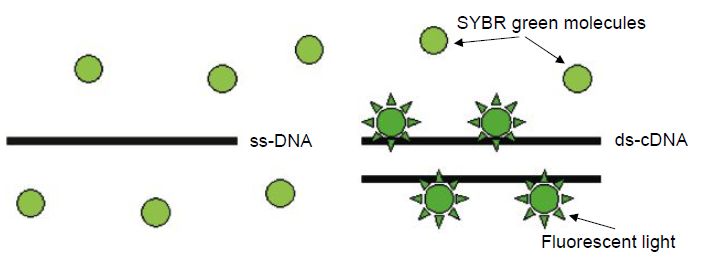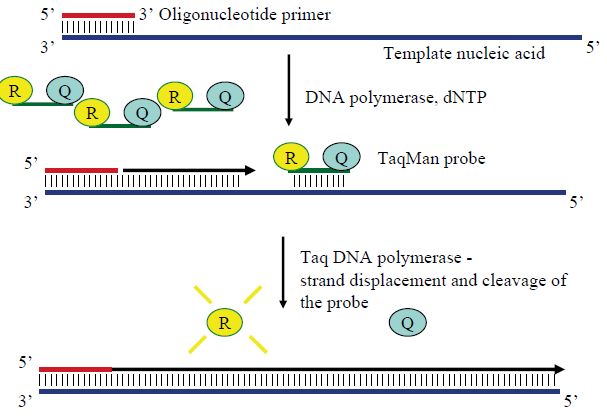

النبات

مواضيع عامة في علم النبات

الجذور - السيقان - الأوراق

النباتات الوعائية واللاوعائية

البذور (مغطاة البذور - عاريات البذور)

الطحالب

النباتات الطبية


الحيوان

مواضيع عامة في علم الحيوان

علم التشريح

التنوع الإحيائي

البايلوجيا الخلوية


الأحياء المجهرية

البكتيريا

الفطريات

الطفيليات

الفايروسات


علم الأمراض

الاورام

الامراض الوراثية

الامراض المناعية

الامراض المدارية

اضطرابات الدورة الدموية

مواضيع عامة في علم الامراض

الحشرات


التقانة الإحيائية

مواضيع عامة في التقانة الإحيائية


التقنية الحيوية المكروبية

التقنية الحيوية والميكروبات

الفعاليات الحيوية

وراثة الاحياء المجهرية

تصنيف الاحياء المجهرية

الاحياء المجهرية في الطبيعة

أيض الاجهاد

التقنية الحيوية والبيئة

التقنية الحيوية والطب

التقنية الحيوية والزراعة

التقنية الحيوية والصناعة

التقنية الحيوية والطاقة

البحار والطحالب الصغيرة

عزل البروتين

هندسة الجينات


التقنية الحياتية النانوية

مفاهيم التقنية الحيوية النانوية

التراكيب النانوية والمجاهر المستخدمة في رؤيتها

تصنيع وتخليق المواد النانوية

تطبيقات التقنية النانوية والحيوية النانوية

الرقائق والمتحسسات الحيوية

المصفوفات المجهرية وحاسوب الدنا

اللقاحات

البيئة والتلوث


علم الأجنة

اعضاء التكاثر وتشكل الاعراس

الاخصاب

التشطر

العصيبة وتشكل الجسيدات

تشكل اللواحق الجنينية

تكون المعيدة وظهور الطبقات الجنينية

مقدمة لعلم الاجنة


الأحياء الجزيئي

مواضيع عامة في الاحياء الجزيئي


علم وظائف الأعضاء


الغدد

مواضيع عامة في الغدد

الغدد الصم و هرموناتها

الجسم تحت السريري

الغدة النخامية

الغدة الكظرية

الغدة التناسلية

الغدة الدرقية والجار الدرقية

الغدة البنكرياسية

الغدة الصنوبرية

مواضيع عامة في علم وظائف الاعضاء

الخلية الحيوانية

الجهاز العصبي

أعضاء الحس

الجهاز العضلي

السوائل الجسمية

الجهاز الدوري والليمف

الجهاز التنفسي

الجهاز الهضمي

الجهاز البولي


المضادات الميكروبية

مواضيع عامة في المضادات الميكروبية

مضادات البكتيريا

مضادات الفطريات

مضادات الطفيليات

مضادات الفايروسات

علم الخلية

الوراثة

الأحياء العامة

المناعة

التحليلات المرضية

الكيمياء الحيوية

مواضيع متنوعة أخرى

الانزيمات
Visualisation of Real-time PCR Amplification
المؤلف:
John M Walker and Ralph Rapley
المصدر:
Molecular Biology and Biotechnology 5th Edition
الجزء والصفحة:
10-11-2020
2935
Visualisation of Real-time PCR Amplification
The critical difference between conventional and real-time PCR is that in the latter the generation of amplification products is monitored directly in the reaction tube. Different fluorescence-based principles are employed for real-time detection. SYBR Green represents one class of DNA binding chemicals that emits much more fluorescence when intercalated into double-stranded DNA compared with the unbound chemical in solution (Figure 1). As a result, the SYBR Green fluorescence increases proportionally to the increase in DNA amplification products. The disadvantage of using SYBR Green is that non-specifically amplified DNA and amplification artefacts such as primer dimers will also generate increased fluorescence, thus reducing the sensitivity compared with nested PCR. Real-time PCR assays utilising an amplicon- specific probe increase the specificity substantially. A number of ‘smart’ assays have been invented based on three oligonucleotides,i.e. two primers and a probe. Several of these assays include TaqMan assays (Figure .2), fluorescence resonance energy transfer (FRET) (Figure .3) assays, Eclipse probes, Scorpion probes and molecular beacon probes.

Figure 1 The SYBR Green molecule has high affinity to double-stranded DNA. SYBR Green fluorescence is much stronger when it is bound to DNA compared with unbound SYBR Green. ss-DNA=single-stranded DNA; ds-DNA=double-stranded DNA.

Figure 2 The principle of TaqMan real-time PCR assays. The probe is labelled with both a fluorescent chemical group (R) and a quencher (Q). When the Taq polymerase elongates the complementary strand from the primer, its 5´–3´ exonuclease activity cleaves any annealed probe, thus separating R from Q. Freed from its quencher, the R fluoresces when exciting light is sent in. The amount of free R, and thus fluorescence, increase exponentially along with amplicons until the PCR reaction approaches the plateau stage.

Figure 3 The principle of fluorescence resonance energy transfer (FRET). Two different probes are complementary to the target sequence. One probe is labelled with fluorescein and the other with LC Red fluorochrome. The hybridisation to the target sequence will bring the two fluorochromes physically close enough for the emission energy of fluorescein to excite the LC Red so that red fluorescent light is emitted. When PCR generates an increasing concentration of target, an increasing fraction of the probes can be positioned to achieve FRET. This can be monitored as increasing red fluorescence.
 الاكثر قراءة في مواضيع عامة في الاحياء الجزيئي
الاكثر قراءة في مواضيع عامة في الاحياء الجزيئي
 اخر الاخبار
اخر الاخبار
اخبار العتبة العباسية المقدسة

الآخبار الصحية















 قسم الشؤون الفكرية يصدر كتاباً يوثق تاريخ السدانة في العتبة العباسية المقدسة
قسم الشؤون الفكرية يصدر كتاباً يوثق تاريخ السدانة في العتبة العباسية المقدسة "المهمة".. إصدار قصصي يوثّق القصص الفائزة في مسابقة فتوى الدفاع المقدسة للقصة القصيرة
"المهمة".. إصدار قصصي يوثّق القصص الفائزة في مسابقة فتوى الدفاع المقدسة للقصة القصيرة (نوافذ).. إصدار أدبي يوثق القصص الفائزة في مسابقة الإمام العسكري (عليه السلام)
(نوافذ).. إصدار أدبي يوثق القصص الفائزة في مسابقة الإمام العسكري (عليه السلام)


















